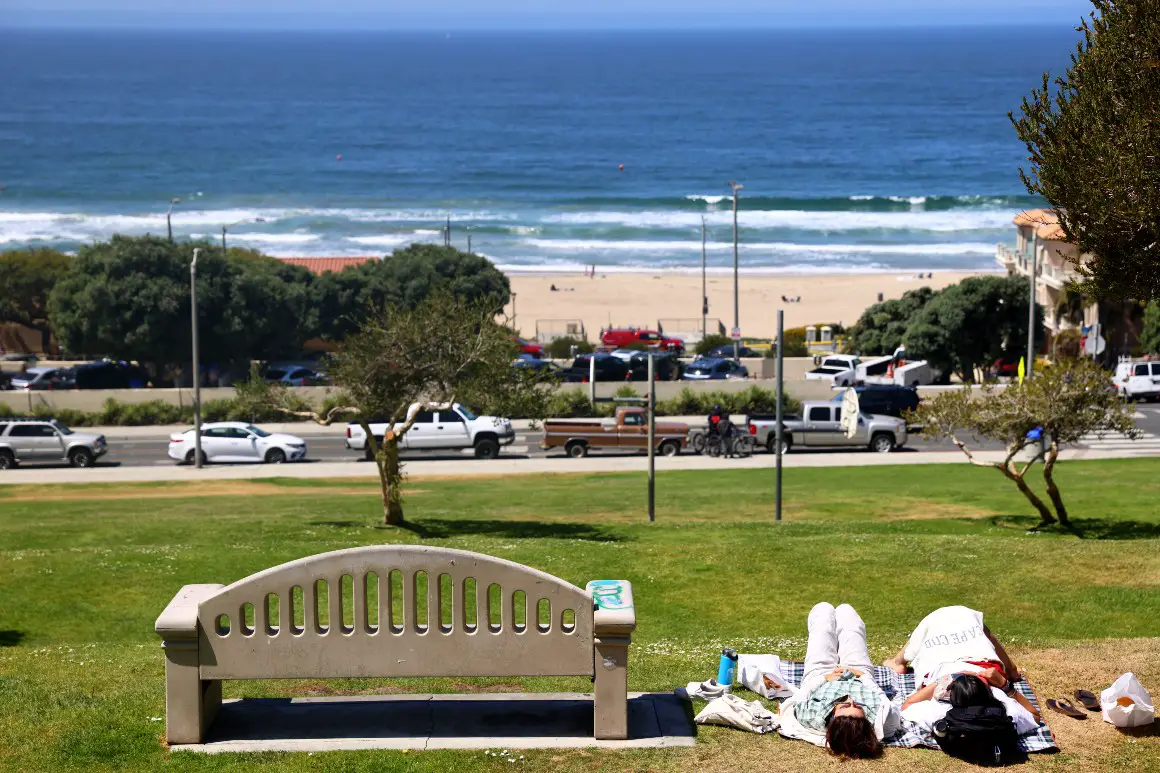But a bone-dry January and February have reactivated fears of drought and wildfires. Memories of summer 2020, when smoke from wildfires turned the sky red, are still fresh. A brush fire that started Wednesday in Orange County prompted evacuations in the affluent community of Laguna Beach and briefly closed Highway 1. This weekend’s Super Bowl in Inglewood could break the 84-degree record for hottest Super Bowl ever, set in 1973.
In San Francisco on Friday, Emma Penny, a management coordinator at the SFJAZZ Center, was eating lunch on a log overlooking Ocean Beach. “I want to enjoy the ability to go outside and be in the sun, but I think creeping in the back of my mind, ‘What does this mean for the future?'” she said. “Just balancing the immediate satisfaction with the kind of dread of it.”
The fear has spread to climatologists, who are being inundated with queries from anxious residents fearing a dark lining in the state’s famously mild weather.
“Folks with self-described severe climate anxiety now reach out to me (& other climate scientists I know) essentially every week,” UCLA climate scientist Daniel Swain tweeted on Monday. “Climate scientists are not equipped to be on the front lines of the surge in climate anxiety — there really need to be more clinicians and practitioners who specialize in this.”
Scientists emphasize that it’s not possible to link any one warm spell definitely to the changing climate, but higher temperatures over the past decade have been drying out soil and plants, making precipitation evaporated faster and raising the probability of severe wildfires.
“The warmth is like a tax on the water that we receive,” said Dan Cayan, a climate scientist at the Scripps Institution of Oceanography at the University of California, San Diego. “We’ve had this unfortunate run of dry years recently. And those are starting to get increasingly taxed by the warmer atmosphere.”
There are still two months left in the state’s traditional rainy period, but the rest of February is looking dry. There’s now less than a 50 percent chance that most of the state will have a normal rainfall year, according to Scripps’ precipitation tracker. “We have essentially this relatively short seasonal window,” Cayan said, “and if conditions are not favorable, then we’re sort of out of luck for the year.”
Dry conditions don’t necessarily increase fire risk in all areas of the state. Dry areas that have a lot of grass and shrubs, like much of Southern California, may actually be less susceptible to burning because they grew less during the rainy season. Dried-out forests, on the other hand, produce more broken branches and other flammable material.
Not everyone is panicked. Andrew Latimer, a University of California, Davis professor who studies the relationship between plants, fire and drought, says there’s still a good chance the state gets much of its normal precipitation. He’s not stressed about the warm, dry winter spell — yet.
“Just put it on pause,” Latimer recommended. “You can save it to freak out about it in 60 days or something. In case you need extra things to freak out about.”
Chris Ramirez and Juhi Doshi contributed to this report.

